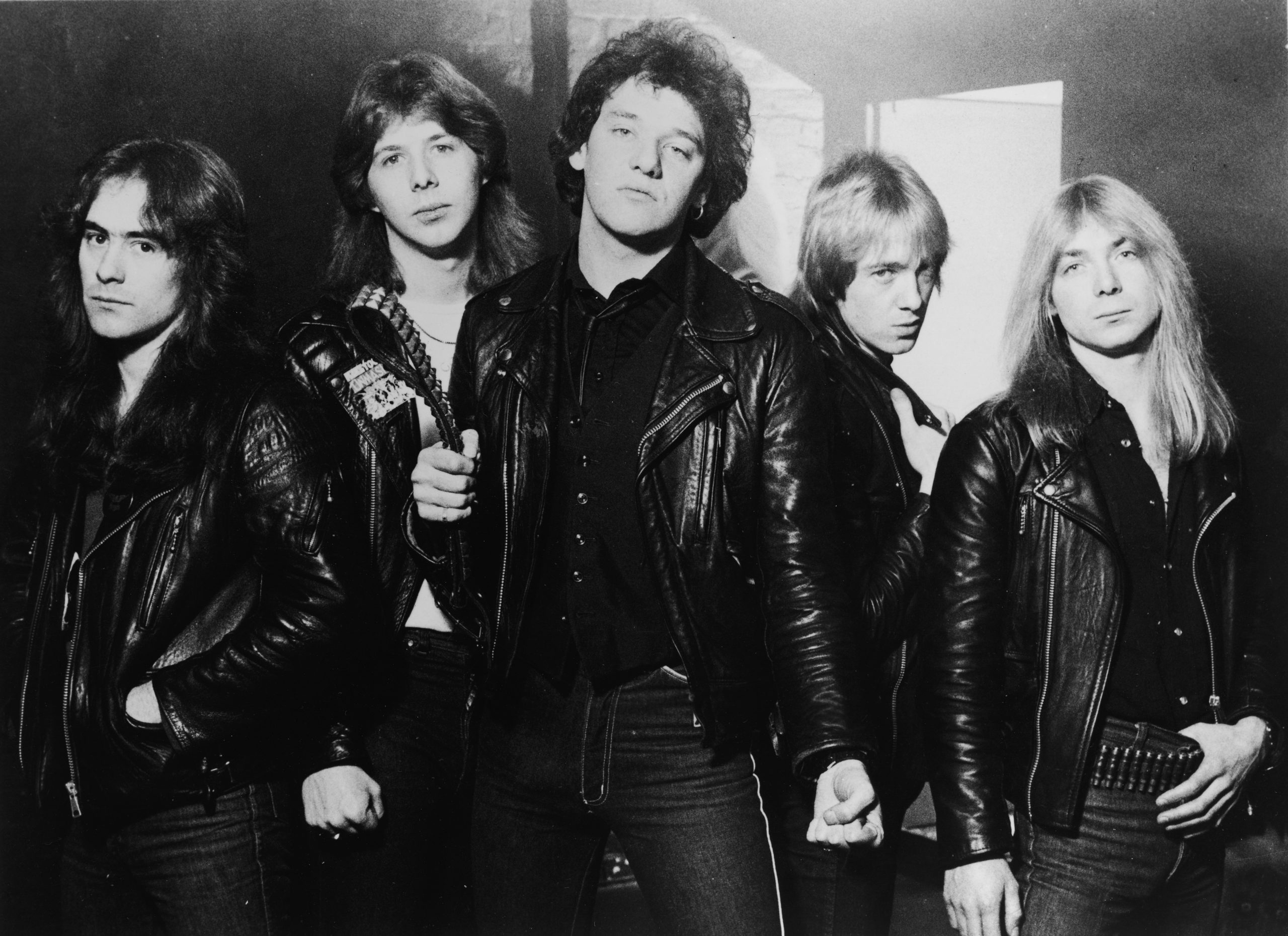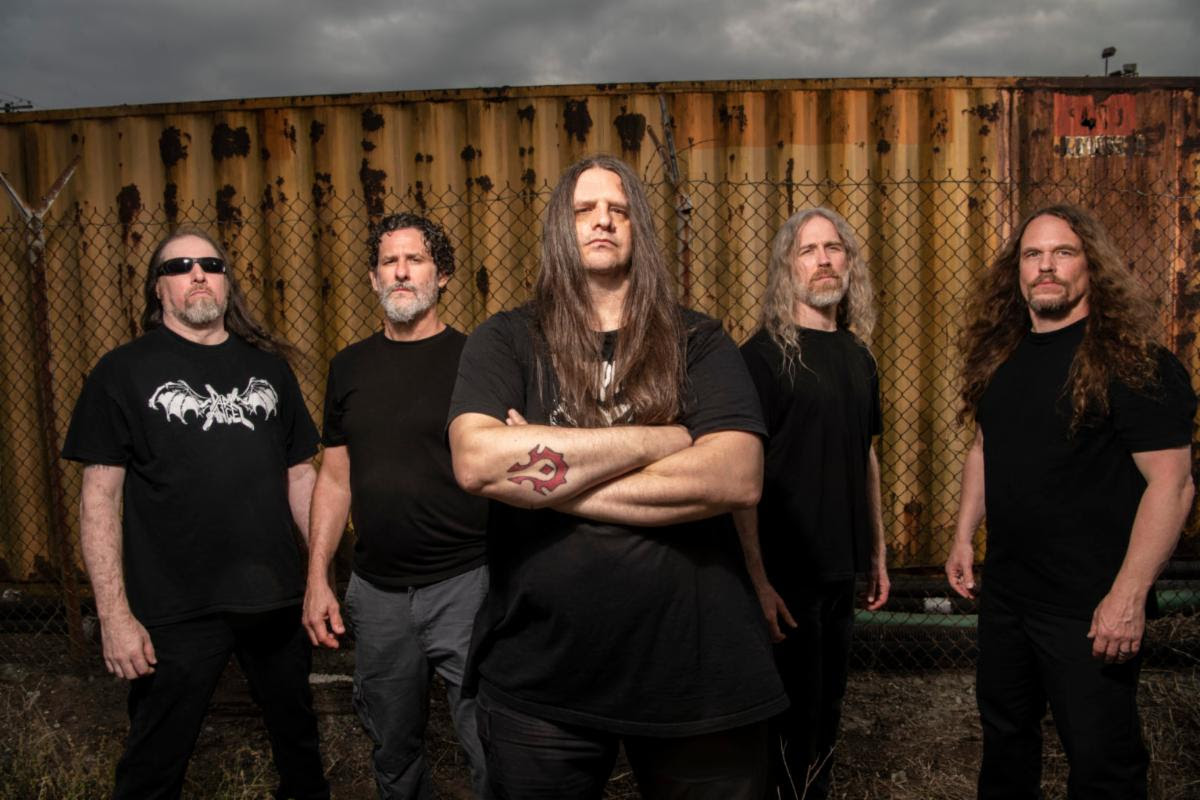Metric occupy a curious place in the modern rock landscape. If they had come up ten years earlier, they certainly would have had a different story. But as they exist now, their legacy will probably be that they were the most successful of the crop of bands that emerged from Toronto in the late-'90s, the same hotbed that gave birth to sister projects Broken Social Scene, Stars, and Feist.
But they also serve as arbiters for a newer brand of rock -- say, bands that lucked out with some choice soundtrack placement in the 2000s and managed to become popular despite the last dying breaths of the traditional rock music industry. Metric represent alt-rock in a truer sense of the word, less the dreck that occupies the current alternative charts but rather something that would fit right in with the genre's heyday -- rock with both artistic purpose and crossover commercial appeal.
They've also grown while maintaining their independence. They've never signed with a major label and, while they certainly play the game, their political lyrics raging against capitalism and selling out ring true. Their most commercially successful album to date, Synthetica, peaked at #12 on the Billboard charts, and they've had even bigger success abroad, both in their native Canada and worldwide. Whatever "mainstream rock" means nowadays, Metric probably qualify for that designation. But they're also a much better band than whatever baggage that label might carry, and they've stayed true to their roots throughout their two-decade-long career.
They began as a duo, of Emily Haines and James Shaw, and they were, ironically enough, originally called Mainstream for a time before changing their name to Metric. Haines and Shaw met in Toronto in the late-'90s: Haines went to an arts high school there, which is where she linked up with Broken Social Scene's Kevin Drew and Stars' Amy Millan; Shaw, who was born in the UK, studied music in Boston before going to Juilliard and eventually landing in Toronto.
They they recorded their first EP in 1998, then self-titled as Mainstream, before moving to New York City. While there, Haines worked at a 24-hour diner and Shaw lived in a massive Williamsburg warehouse where he counted future members of Yeah Yeah Yeahs, TV On The Radio, and Liars as roommates.
It's around then that they first drew attention from the big-business side of the industry. A major label executive gave the two of them some money to record a demo, but not much came of it besides a distaste for that aspect of the music world. "I felt like an idiot waiting for someone to tell me I'm cool. I don't want to be fucking cool," Haines once said. "I don't want to impress someone in marketing."
So while that demo didn't lead to a label deal, it did help them along on the path of recording their first album together, Grow Up And Blow Away. It's a much different style than the band would eventually adopt, and it was soon after they recorded it that they picked up their drummer, Joules Scott-Key, who had been listening to the duo's demo and approached them at a show. He recommended his friend from Texas music school, bassist Josh Winstead, and just like that Metric was formed.
They've been a band now for almost 20 years. They've moved around a lot -- they're still closely associated with Toronto, but they've also called Los Angeles home and they got their start in New York City. They've also grown stronger and more dynamic as the years have passed, their synth-punk giving way to glitzy stadium rock. This week, they're putting out their seventh studio album, Art Of Doubt, and with that in mind, we're looking back at their discography so far, from worst to best.
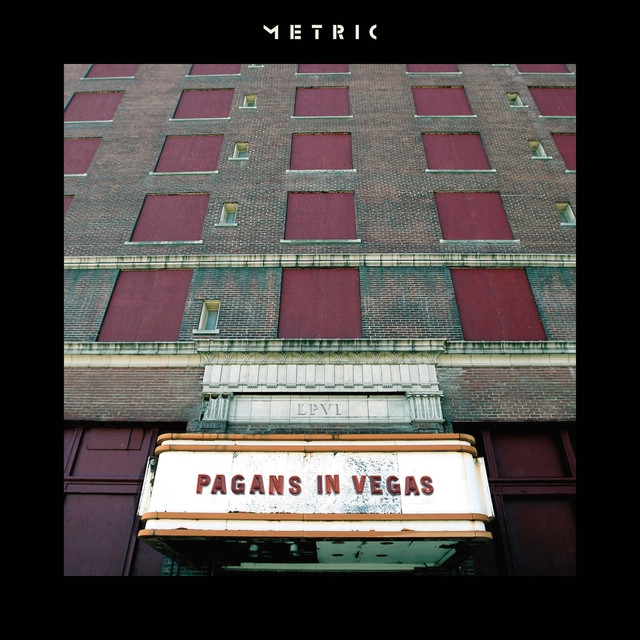
7. Pagans In Vegas (2015)
Pagans In Vegas was the end of a path for Metric. As they became sleeker and more streamlined over the years, they went too far and sawed off a bit too much of their edge on this one. The band framed Pagans In Vegas as their album with no guitars and, after long striking a nice equilibrium between massive riffs and urgent synths, taking away one half of that equation ended up not working out so well. Pagans In Vegas sounds sedate because of it. It's the only album in Metric's discography that I'd venture is actually pretty bad.
They recorded it during their stadium tour supporting Imagine Dragons, and it has more than a little in common with that sort of vapid grocery-store rock. It pulls from the '80s a lot, too, steeped in nostalgia for Depeche Mode and New Order. Occasionally, the band will hit on a cool texture with their pillowing synths, but there's really just not much that sticks. The songs too often push towards gratingly repetitive, like "Lie Lie Lie" or "Too Bad, So Sad," and those repetitions don't add up to anything more substantial. Even one of the few highlights, early single "Cascades," lacks the teeth of Metric's best.
In interviews around the release, the band said that they had recorded a companion album to Pagans In Vegas, which leaned hard in the other direction -- they were rumored to have hired an orchestra for it -- but that album never materialized. As it is, Pagans doesn't feel like it can stand on its own.

6. Art Of Doubt (2018)
Art Of Doubt is a course correction from Pagans In Vegas. Where that album was practically all synths, Metric's latest in all about the guitars, and the band are all the better for it. They recapture some of the crunching swagger that characterized their earliest work. Art Of Doubt goes for a widescreen sound that could fill stadiums but would also feel at home pounding against the walls of a rock club.
It's the first album that Shaw didn't have a hand in producing. Instead, Metric entrusted Justin Meldal-Johnsen (M83, Beck, Nine Inch Nails) to produce the entire thing, letting the band focus on, well, being a band. "Everyone played on every single song, we were all in one room together like the way we were in the early, early days, and I think you can hear it and feel it," Haines said. Over the last two decades, Metric have become a well-oiled machine live, and Art Of Doubt really pays off on their road workhorse mentality. They lock into grooves with considerable ease, and those grooves spread out and shape-shift. It's occasionally indulgent -- not all of these songs need to stretch out past the five-minute mark -- but that's part and parcel with the showmanship of these tracks. There's a confidence and consideration here that feels hard-earned.
The band even engage in some self-mythologizing on standout "Now Or Never Now." The song, which itself feels like a culmination of the sweeping aesthetic that Metric have built over the years, finds Haines taking stock of where they are as a group, twenty years on, and placing value on silence just as much as noise. "It hurts to turn the radio on/ Stamina’s gone/ My spirit is weak," she sings. "Because every time I start to move on/ Keep hearing that song/ I'm brought to my knees."
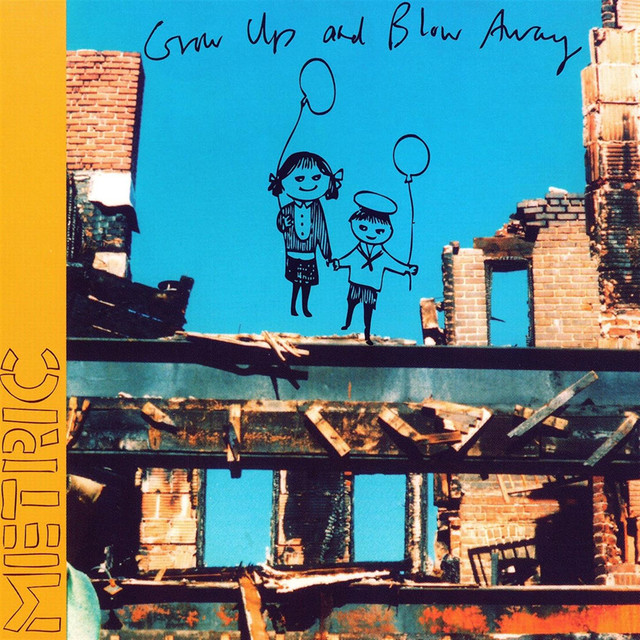
5. Grow Up And Blow Away (2001 / 2007)
Grow Up And Blow Away was the first full-length that Haines and Shaw recorded, before they had a full band in place. It's a lot different than what Metric would eventually become, but its great in its own right. The two of them put it together over the course of a couple years and were all set to release it in 2001 when the label they had signed to was bought up by another label and it ended up sitting on a shelf for six years. It wouldn't officially come out until 2007, as a stopgap between Live It Out and Fantasies.
By that time, Metric had evolved well beyond the blend of trip-hop and scratchy atmospherics that characterize the album. The band wisely chose to excise a few tracks from the version that was released -- the original album had previously circulated online, and most of its missing tracks are missing for a reason -- and, as it stands, Grow Up And Blow Away is lean and intoxicating.
It best serves as a document of Haines' always thoughtful lyricism. The Metric leader is also the daughter of poet Paul Haines -- perhaps best known for his work on the jazz opera Escalator Over The Hill with Carla Bley -- and Haines seems to be channeling her father quite a bit on this album, adopting a poetic cadence for many of these songs. The album's less showy arrangements mean that Haines' narratives really have the opportunity take hold. "Rock Me Now" tells the story of a young girl growing up in seedy Vegas -- Haines sells the role of leathered lounge lizard over an over-the-top jazzy snapping beat. She exudes effortless cool on songs like "Hardwire" and "The Twist," and the aerated chorus and languid catchiness of "Soft Rock Star" probably best forecasted what Metric would transform into.

4. Fantasies (2009)
Metric went through a huge leap in popularity with Live It Out, and it took them four years to come back with Fantasies. In that time away, each of them took a break. Haines released an excellent solo album, Knives Don't Have Your Back, Shaw went on tour with Broken Social Scene, and Scott-Key and Winstead both formed the group Bang Lime. Compared with the explosive Live It Out, Fantasies is a sepia-toned comedown, the band filling in the wrinkles of age with a lot of heavy soul-searching.
Its opening track, written by Haines during a writing sojourn in Buenos Aires, finds her grappling with what it means to be a leader of a band, to have expectations placed on you and people looking up to you. "I tremble/ They're gonna eat me alive," she sings. "If I stumble, they're gonna eat me alive." No one is faultless, and she feels the weight of that, stopping just short of apologizing for the crime of being human. Often on Fantasies, Haines places herself as an outsider looking in. On "Satellite Mind," she confers with ghosts; on "Gimme Sympathy," she posits the question: "Who would you rather be: the Beatles or the Rolling Stones?" The track answers: Well, neither. Can't we just be ourselves?
Metric strike a great balance on Fantasies, between glam rock and more introspective fare. Haines' lyrics are, as always, multifaceted, and the rest of the band responds in kind, crafting songs that shift and build and sparkle with each new revelation. It's maybe the band at their most sonically varied, and each song feels high-stakes and high-wire. Its closer, the absolutely massive "Stadium Love," sounds like a powder keg. Haines once described it as such: "Imagine an apocalyptic Noah's Ark transplanted to the Thunderdome." That's pretty accurate, and it's indicative of the ambitious nature of Fantasies, as the band catapulted from burgeoning Toronto rock band to something bigger.

3. Synthetica (2012)
Synthetica is Metric at their most anthemic and finely-tuned. They doubled down on the widescreen aspirations that were present on Fantasies, and went all-in on stormy melodrama and searing hooks. The band has always operated best when melding together analog and synthetic instruments, and Synthetica uses that inclination as a sonic jumping off point. A whole album whose entire point is to marry those two elements together works just as well as you might expect. Which is to say, pretty damn well.
It's a concept album of sorts: "It's about what is real versus what is artificial," Haines laid out in a statement to fans when the album was announced. It takes the technological anxiety that ushered in the latest decade and combines it with Haines' point-of-view, which stretches back to right before constant connectivity became ubiquitous. Synthetica is glitzy but grounded, and it finds Metric at their most fire-and-brimstone about the current state of our society. "Speed The Collapse" is a song about how we're now completely ambivalent to anything and everything. "Watched our neighbor's house collapse/ Looked the other way," Haines deadpans.
The entire album sounds like a waking dream, from the gentle crest of opener "Artificial Nocturne" right through to the end, but it's a dream populated with situations that have an eerie sense of unreality, and within that framework Metric have a lot of fun. Take the punchiness of "The Void," or the bratty put-on of "Lost Kitten," and especially the go-for-broke "Breathing Underwater," in which Haines uses one of the band's most overwhelming hooks to remind you to kill your idols: "They were right when they said/ We should never meet our heroes/ When they bow at their feet, in the end it wasn’t me."
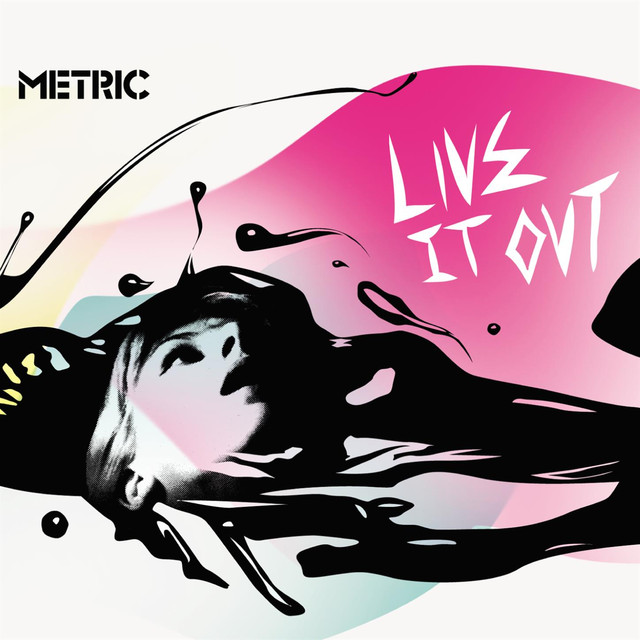
2. Live It Out (2005)
Live It Out starts with an epic feint. The band lulls you in with two minutes of Haines whisper-singing between entwining guitars, then it explodes into a mass of noise and for the next forty minutes, Metric rarely let up. Live It Out is a loud album -- it's pretty much on at all times. The guitars? They're piercing. The drums? They're booming. The message? It's pretty dismal. Basically, we're all fucked.
Metric are sort of a feint of a band in general. They play large-scale and commercially appealing music that contains some pretty radical politics, a Trojan horse for Haines' scorching worldview. Throughout their two decades as a band, Haines has never shied away from shining a light on society's many twisted tendencies, and Live It Out is the album whose sonics most resemble those knotted inequities that she gets at in her songs. Sometimes they're a little on the nose here -- "Buy this car to drive to work/ Drive to work to pay for this car"; "I fought the war but the war won" -- but Haines and the rest of the band have the confidence to pull that off and also make those polemics stick.
Live It Out is slick as all hell, and it also plays that slickness against itself. Just when you start to settle in, it throws curveballs at you left and right. The smoothest tracks on the album -- the French pop sigh "Poster Of A Girl" and the blooping "The Police And The Private" -- are sandwiched between the album's fiercest volleys, "Monster Hospital" and "Patriarch On A Vespa." It's on that last one where the album's in-the-red high water mark hits: Haines screams a terror at the end of every line, and it hits so sweet.
Live It Out really put Metric on the map, mainly by the way of some choice television and movie syncs around the time it came out. The most notable association is with Grey's Anatomy, during its juggernaut second season. "Monster Hospital," which was also included on the show's soundtrack, is featured in a scene where a guitarist's fingers are chopped off loading his gear onto a truck. Looking back, that's pretty funny, and it also is a good encapsulation of the razor-sharp edges the band was messing around with on this album.

1. Old World Underground, Where Are You Now? (2003)
Emily Haines has always been an old soul. That's surely how it sounds on Metric's first album as a full band, which she recorded at the ripe old age of 29. Old World Underground, Where Are You Now? begins with her clearing her throat, belting out the titular question all-knowingly. She sounds weathered, like she's been down in the trenches and is tired of fighting the good fight. She's searching for some commonality of human experience that's been lost, a thread that once tied us together that's been severed by war and scene politics.
Metric really came roaring out of the gate fully formed, and the first album they released is still the best distillation of their sound. It's seething and cool, angry and catchy, earnest and confident. It was written at the height of post-9/11 tension, as all of our systems were failing and the government was getting into deeper and deeper shit. The slinking "Succexy" is an embittered rail against the military industrial complex that sounds especially prescient today, with its talk of oversaturation and ambivalence: "All we do is talk, sit, switch screens/ As the homeland plans enemies." On the album's opening track, Haines sardonically sings that "our falling bombs are her shooting stars."
In addition to the society's fractured state, Metric were also lamenting a romanticized music scene that maybe never really ever existed in the first place. One of their biggest singles, "Combat Baby," is about two punks who just can't make it work. "Dead Disco" and "The List" both poke holes in exclusionary gatekeepers -- on the latter, she sneers "Who we are now, we will always be/ The best haircuts are taken" and on the former she's occupied with not becoming a carbon copy of anyone else.
Every song is honestly a stunner -- it's wall-to-wall highlights. From the lovely twinkles of the album's ballads "Calculation Theme" and "On A Slow Night" to the acidic bile that's "Wet Blanket," Old World has an inescapable energy. It's the foundation for what Metric would later become, grounded by some heady politics and undeniable hooks. It's Metric's most enduring statement, and it's more than enough to build a 20-year-plus career on.





